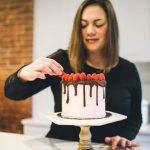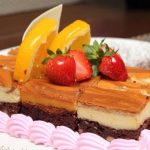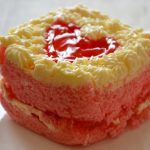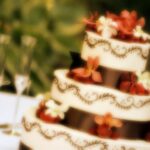Cake decoration plays a crucial role in transforming a simple baked good into a visually stunning and enticing masterpiece. From birthdays to weddings, cake decoration adds that extra flair and personal touch to any occasion. In this article, we will delve into the world of cake decoration and provide you with all the essential information on how to make cake decoration come to life.
The art of cake decoration relies on a combination of creativity, skill, and the right tools and equipment. Understanding the importance of each element is key to achieving professional-looking results. Whether you’re a beginner or an experienced baker looking to up your decorating game, knowing the fundamentals is essential for success.
In the following sections, we will take a comprehensive look at the essential tools and equipment needed for successful cake decorating, explore different types of frosting and icing options available, walk you through basic and advanced cake decorating techniques, offer tips for perfecting your skills, provide theme-based decoration ideas, and address common problems encountered during the process.
So roll up your sleeves, grab your piping bag, and get ready to elevate your baking game with these valuable insights on how to make cake decoration truly shine.
Essential Tools and Equipment for Cake Decoration
Cake decoration is an essential aspect of baking that can elevate a simple cake into a stunning masterpiece. In order to successfully decorate a cake, it is crucial to have the right tools and equipment on hand. Without the proper tools, achieving professional-looking decorations can be quite challenging. Whether you are a beginner or an experienced baker, having the essential tools for cake decoration is key to creating visually appealing treats.
One of the most important tools for cake decoration is a turntable, which allows you to easily rotate the cake while decorating. This ensures even and smooth application of frosting or icing on all sides of the cake.
Other must-have tools include offset spatulas for spreading frosting, piping bags and tips for intricate designs, bench scrapers for smoothing surfaces, and various shaped cutters for creating unique decorations. Additionally, having a good quality stand mixer or hand mixer can make preparing frosting or icing much easier and faster.
When it comes to equipment, investing in a few key items can greatly enhance your cake decorating skills. A good quality cake decorating kit that includes different piping tips, couplers, and flower nails is essential for creating various designs. Cake decorating combs or scrapers help achieve clean lines and textures on frosted cakes.
And don’t forget about a sturdy cake leveller for evenly slicing layers and achieving a professional finish. By having these essential tools and equipment at your disposal, you will be well-equipped to tackle any cake decorating project with confidence.
For those aspiring to learn how to make cake decoration stand out effortlessly, having the right tools and equipment is crucial. They not only simplify the process but also allow for more intricate and creative designs. With these essentials in your arsenal, you can take your cake decorating skills to new heights and impress friends and family with your beautifully decorated creations.
Different Types of Frosting and Icing
When it comes to cake decoration, choosing the right type of frosting and icing is crucial in achieving the desired look and taste for your baked creation. There are various options available, each with its own unique characteristics and uses. Understanding the differences between these different frostings and icings can help you create stunning cakes that not only look beautiful but also taste delicious.
Buttercream Frosting
One of the most popular choices for cake decoration, buttercream frosting is creamy, smooth, and easy to work with. Made from butter, powdered sugar, and flavorings like vanilla or cocoa powder, buttercream can be easily colored and piped onto cakes for intricate designs. It provides a sweet and rich taste that complements a wide range of cake flavors.
Fondant
Fondant is a versatile icing that can be rolled out into thin sheets to cover cakes smoothly or molded into decorative shapes. It has a smooth texture and offers a clean canvas for intricate designs. While some people may find fondant too sweet or chewy, it is preferred for its ability to create flawless finishes on cakes for special occasions like weddings or birthdays.
Cream Cheese Frosting
Cream cheese frosting is another popular choice known for its tangy flavor that pairs well with carrot cake, red velvet cake, and other desserts. This frosting is made from cream cheese, butter, powdered sugar, and vanilla extract. Cream cheese frosting adds a creamy richness to cakes while providing a slightly tangy contrast to the sweetness of the cake layers.
By understanding the characteristics of different types of frosting and icing options, you can select the best one to complement your cake flavor and design. Experimenting with various frostings and icings will allow you to develop your skills in cake decoration and create visually stunning treats for any occasion. Whether you prefer buttercream’s versatility, fondant’s smooth finish, or cream cheese frosting’s tangy twist, learning how to make cake decorations using these elements will elevate your baking game.
Basic Cake Decorating Techniques
Cake decorating is not only a fun and creative activity but also an essential aspect of baking that can truly elevate the presentation of your cakes. Whether you are a beginner or an experienced baker, mastering basic cake decorating techniques is crucial in achieving professional-looking results. Here is a step-by-step guide on how to make cake decoration using piping, frosting, and fondant application:
- Piping: Piping is a classic cake decorating technique that involves using a pastry bag with different tips to create decorative designs with frosting. To start piping, fill your pastry bag with your desired frosting or icing and twist the top to secure it. Hold the bag at a 45-degree angle to the surface of the cake and apply gentle pressure to pipe out the frosting in various shapes and designs.
- Frosting: Frosting is another fundamental cake decoration technique that can instantly transform the look of your cake. To frost a cake smoothly, start by applying a thin layer of frosting, known as a crumb coat, to seal in any crumbs. Once the crumb coat has set, apply a thicker layer of frosting using an offset spatula or bench scraper to achieve a smooth and even finish.
- Fondant Application: Fondant is a versatile sugar paste that can be rolled out and draped over cakes for a seamless and polished look. To apply fondant to your cake, roll it out into a thin sheet on a clean surface dusted with powdered sugar or cornstarch. Carefully lift the fondant over the cake and gently smooth it down the sides, trimming off any excess with a sharp knife for clean edges.
Mastering these basic cake decorating techniques will provide you with a solid foundation for creating stunning cakes at home. Practice makes perfect when it comes to cake decoration, so don’t be afraid to experiment with different designs, colors, and textures to unleash your creativity and enhance your baking skills.
Get Inspired by Our Step-by-Step Guide Customized Cake Decorating Tips
- Use stencils or templates for precise designs
- Experiment with different piping tips for varied textures
- Incorporate edible decorations like sprinkles, chocolate shavings, or fresh fruit
Advanced Cake Decorating Techniques
Sculpting
Sculpting is a advanced cake decorating technique that involves shaping and molding edible materials to create intricate designs and figures. To start sculpting, you will need specialized tools such as sculpting tools, modeling paste or fondant, and a steady hand. Whether you’re creating flowers, animals, or even 3D characters, sculpting adds a unique touch to your cake decorations. One important tip for beginners is to start with simple shapes and gradually work your way up to more complex designs.
Painting
Painting on cakes allows decorators to add detailed designs and vibrant colors that may be difficult to achieve with traditional frosting techniques. Edible food coloring and paint brushes are essential tools for painting on cakes. To ensure success with painting, it’s important to practice on a separate surface first before applying the design onto the cake directly. Additionally, using different painting techniques such as dry brushing or watercolor effects can create stunning visuals on your cakes.
Airbrushing
Airbrushing is a versatile technique that gives cakes a smooth and seamless finish with even layers of color. Investing in an airbrush machine along with edible food colors is key to mastering this technique effectively. Beginners can start by practicing basic airbrushing techniques like creating gradients or stenciling patterns onto cakes. With patience and practice, you can achieve professional-looking results using airbrushing for your cake decorations.
By exploring advanced cake decorating techniques like sculpting, painting, and airbrushing, bakers can elevate their creations from simple to extraordinary. These techniques require practice and patience, but the end result is worth the effort in creating visually stunning cakes that will impress any audience. Remember to experiment with different tools and materials to find what works best for your unique decorating style when learning how to make cake decoration into an art form.
Tips and Tricks for Perfect Cake Decoration
Cake decoration is not only about making a cake visually appealing but also adding a personal touch and creativity to your baked creations. To achieve professional-looking cake decorations at home, it is essential to have the right tools and equipment. Invest in quality piping bags, tips, offset spatulas, fondant smoother, turntable, and a good assortment of food coloring gels for vibrant designs.
One of the key elements in mastering how to make cake decoration stand out is practicing basic techniques consistently. Piping frosting onto cakes can seem daunting at first, but with practice and the right tip size for the desired effect, you can create beautiful borders, rosettes, and writing on your cakes.
Learning how to work with fondant can also elevate your cake decorating skills. From covering cakes smoothly to creating intricate shapes and figures, fondant opens up a world of possibilities for creative cake designs.
In addition to mastering basic techniques, advanced cake decorating techniques like sculpting, painting, and airbrushing can take your cake decorations to the next level. Sculpting fondant into realistic flowers or figurines adds dimension and artistry to your cakes. Painting with edible food colors allows you to create unique designs and textures on your cakes.
And using an airbrush tool gives you precise control over shading and blending colors for professional-looking finishes. Practice these techniques regularly to improve your skills and create stunning cake decorations that will impress everyone who sees them.
| Important Tools | Essential Equipment |
|---|---|
| Piping bags | Turntable |
| Piping tips | Fondant smoother |
| Offset spatula | Food coloring gels |
Theme-Based Cake Decoration Ideas
When it comes to theme-based cake decoration, the possibilities are endless. Whether you are celebrating a birthday, anniversary, holiday, or any special occasion, incorporating a theme into your cake decoration can take your creation to the next level.
One popular theme is a “unicorn” cake, which involves using pastel colors, edible glitter, and unicorn horn and ears decorations to bring a touch of magic to your cake. Another fun theme is a “beach” cake, where you can use blue frosting for the ocean, crushed graham crackers for sand, and edible seashells for a tropical vibe.
For those looking to create a themed cake for Halloween, consider making a “spiderweb” cake by using black frosting as the base and piping white frosting in a spiral pattern on top. Then, use black icing to draw concentric circles from the center outwards to create the spiderweb effect.
Additionally, adding plastic spiders or candy eyeballs on top can add an extra spooky touch to your Halloween-themed creation. The key to successful theme-based cake decoration is attention to detail and creativity.
When planning a themed cake decoration, it is essential to consider the flavors and preferences of the person or people who will be enjoying the cake. For example, if you are decorating a children’s birthday cake with a “superhero” theme, you could incorporate vibrant colors and action figures made of fondant on top of the cake.
Always keep in mind that the best themes are personal and reflect the interests or hobbies of the individual celebrating the occasion. With some imagination and practice, anyone can master how to make cake decoration fit any chosen theme beautifully.
| Theme | Idea |
|---|---|
| Unicorn | Pastel colors, edible glitter, unicorn horn decorations |
| Beach | Blue frosting (for ocean), crushed graham crackers (for sand), edible seashells |
| Halloween | Black/white frosting for spiderweb effect with plastic spiders/candy eyeballs |
Troubleshooting Common Cake Decoration Problems
When it comes to cake decoration, even the most experienced bakers can encounter some common issues and mistakes that may hinder the final presentation of their baked creations. One of the most frequent problems faced during cake decoration is icing that is too runny or too stiff.
This can make it difficult to achieve smooth finishes or intricate designs on the cake. To resolve this issue, it is important to adjust the consistency of the icing by adding more powdered sugar to thicken it or a small amount of liquid to thin it out.
Another common problem when decorating cakes is air bubbles forming in the frosting or icing, leading to an uneven surface or blemishes on the cake’s appearance. To prevent this issue, gently tap the frosted cake with a spatula or use a toothpick to release any trapped air bubbles before they harden. Additionally, allowing the frosting to rest for a few minutes after mixing can help air bubbles rise to the surface and be easily removed.
Furthermore, achieving vibrant colors in cake decorations can be challenging, especially when using natural food coloring agents such as beet juice or turmeric. The key to vibrant and consistent colors lies in using gel food coloring instead of liquid ones since they are more concentrated and provide better color saturation.
Additionally, gradually adding small amounts of food coloring while mixing until the desired shade is achieved can prevent over-coloring and ensure uniformity in the final design. By troubleshooting these common cake decoration problems with these simple solutions, bakers can elevate their decorating skills and create visually stunning cakes that are sure to impress any audience.
Conclusion
In conclusion, mastering the art of cake decoration is not only about making a visually stunning dessert but also about expressing creativity and passion through your baking. By understanding the importance of cake decoration, acquiring the essential tools and equipment, exploring different types of frosting and icing, and practicing basic and advanced techniques, you can elevate your cakes to new levels of delicious beauty.
Whether you are a beginner or an experienced baker, there is always something new to learn in the world of cake decorating.
To truly excel in cake decoration, it is crucial to practice regularly and experiment with different techniques. Don’t be afraid to try new things, mix and match various styles, colors, and textures to create unique designs that reflect your personal touch. Remember that perfection comes with practice, so don’t get discouraged by initial mistakes or challenges. With patience and determination, you will see improvement in your cake decorating skills over time.
In the end, the joy of creating beautiful cakes lies not only in the finished product but also in the creative process itself. So, unleash your imagination, follow your passion for baking, and have fun experimenting with different cake decoration techniques.
Whether it’s for a special occasion or just a regular day at home, enjoy the journey of making every cake a work of edible art that brings smiles to faces and delight to taste buds. So go ahead and explore how to make cake decoration an exciting part of your baking repertoire.
Frequently Asked Questions
What Do You Use to Make Cake Decorations?
I use various tools and ingredients to make cake decorations such as fondant, gum paste, food coloring, piping bags, tips, and molds. These items help me create intricate designs and add flair to my cakes.
How Can I Decorate Cake at Home?
Decorating a cake at home can be a fun and creative process. I typically start by frosting the cake with buttercream or fondant. Then, I use piping bags and tips to add designs like swirls or flowers. Edible decorations like sprinkles or edible pearls can also enhance the look of the cake.
What Are the Steps in Cake Decoration?
The steps in cake decoration typically involve preparing the surface of the cake by applying a smooth layer of frosting or fondant. After that, I usually sketch out my design before piping or adding any intricate details.
Adding layers, textures, colors, and finishing touches are all crucial steps in achieving a beautifully decorated cake. Remember that practice makes perfect when it comes to mastering cake decoration skills!

Welcome to my blog about home and family. This blog is a place where I will share my thoughts, ideas, and experiences related to these important topics. I am a stay-at-home mom with two young children. I hope you enjoy reading it! and may find some helpful tips and ideas that will make your home and family life even better!





